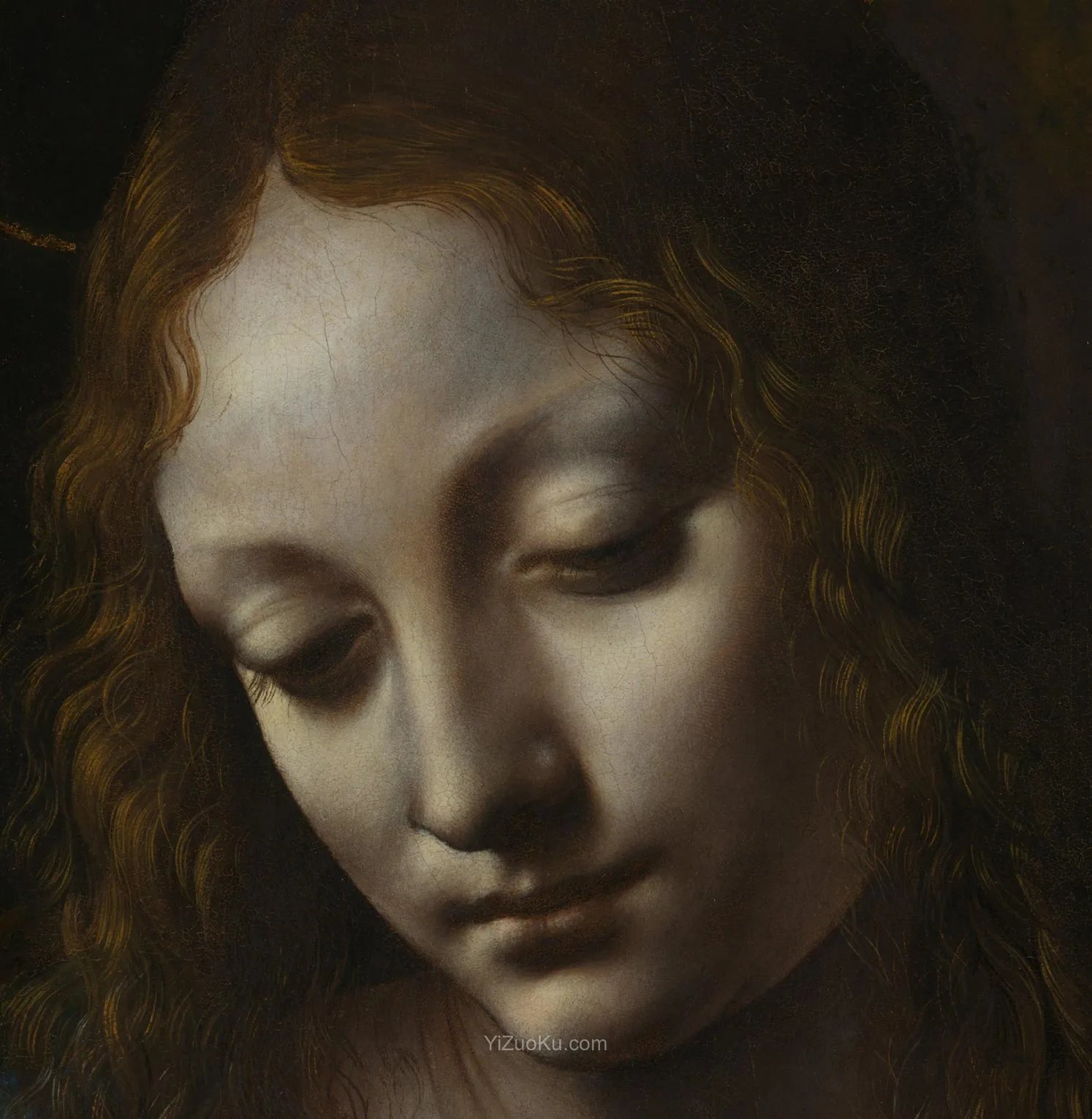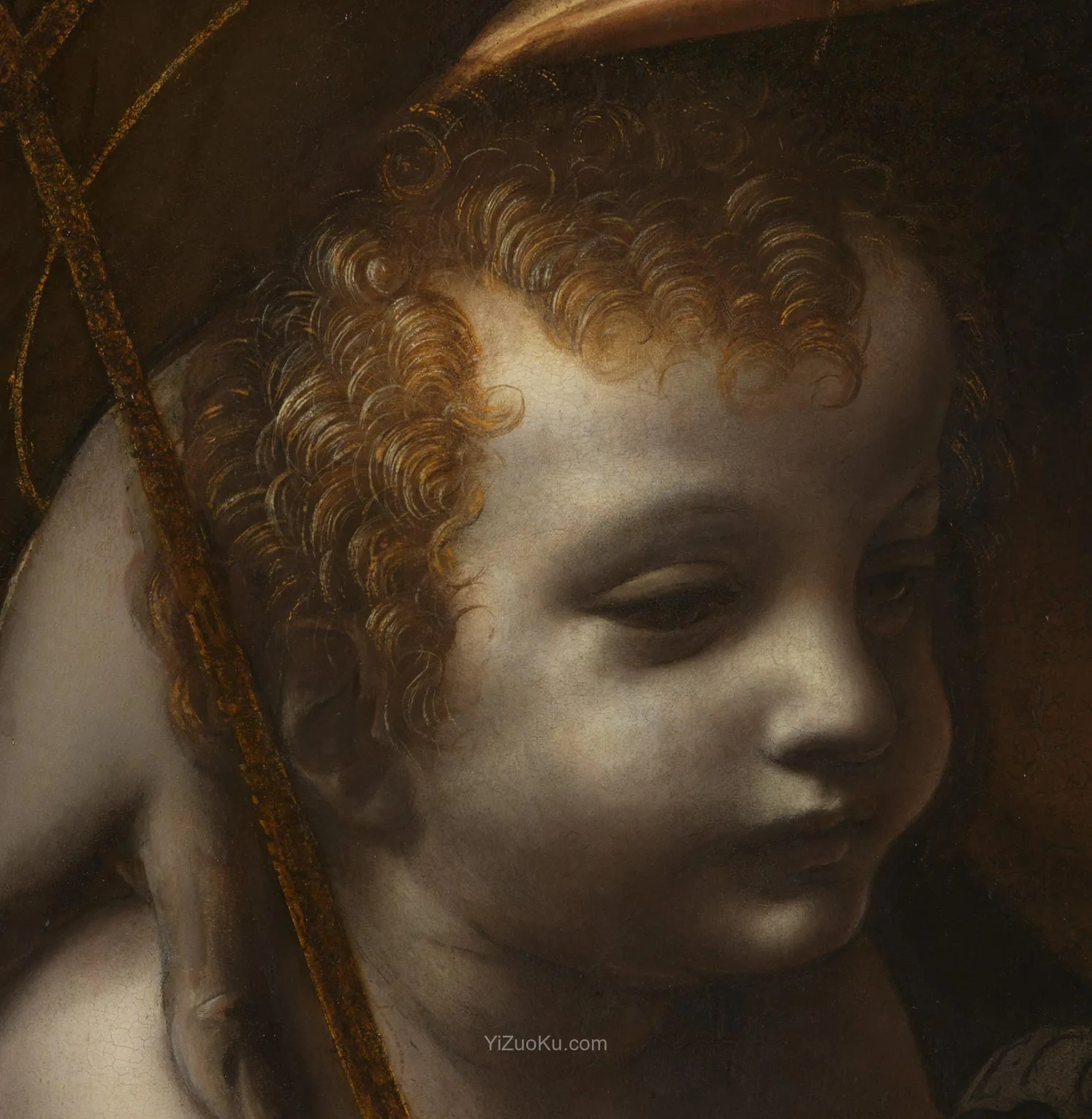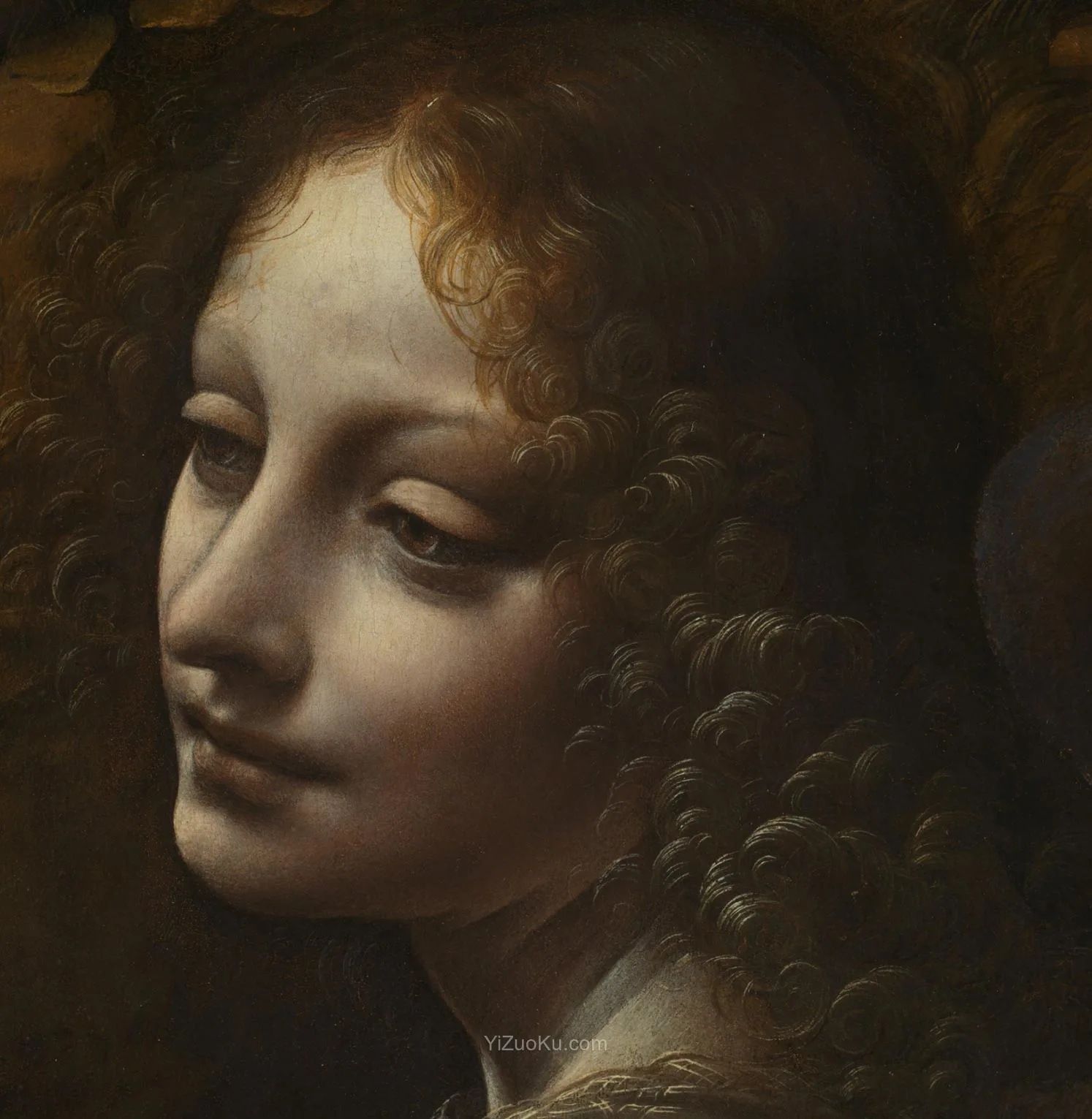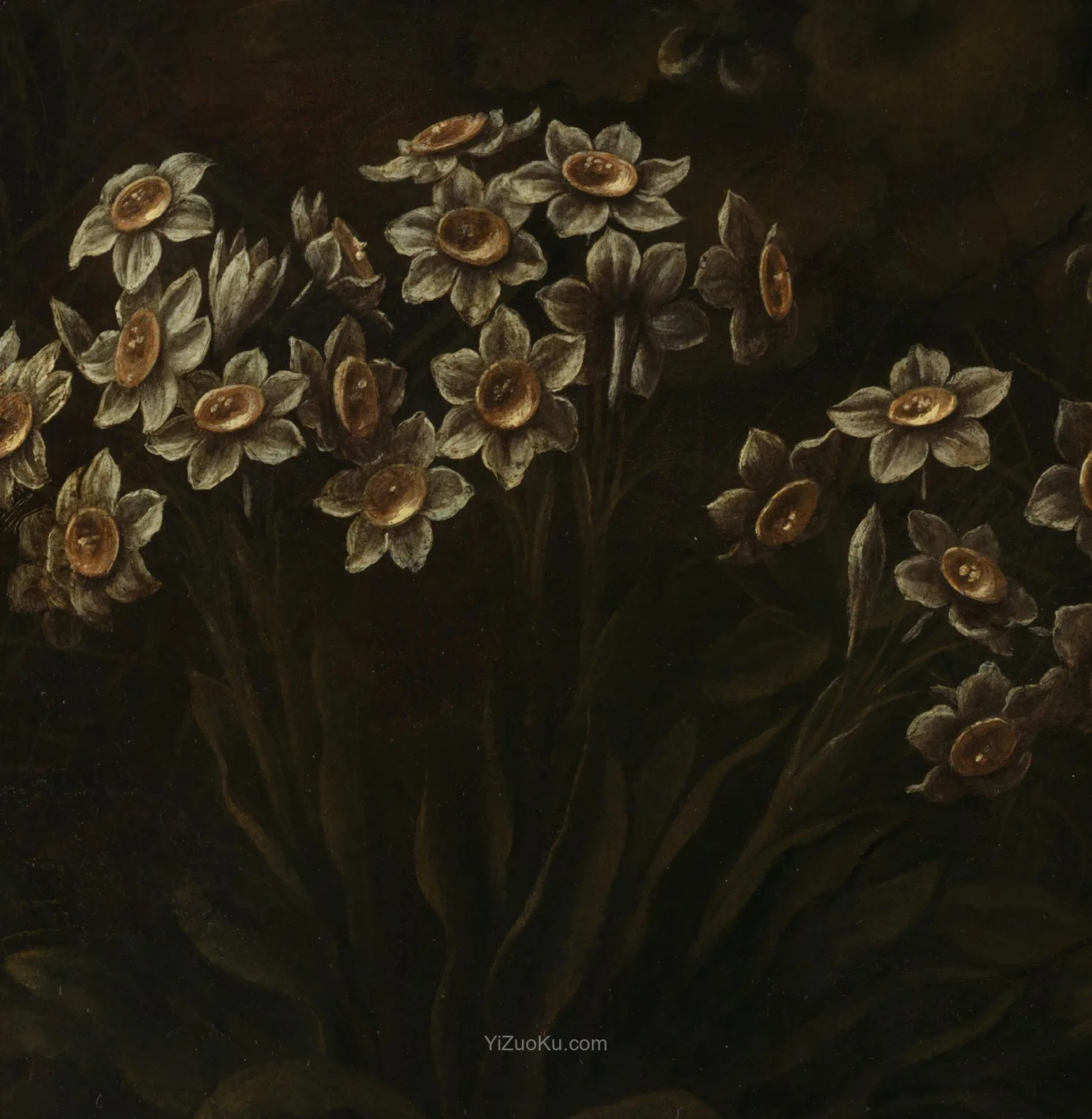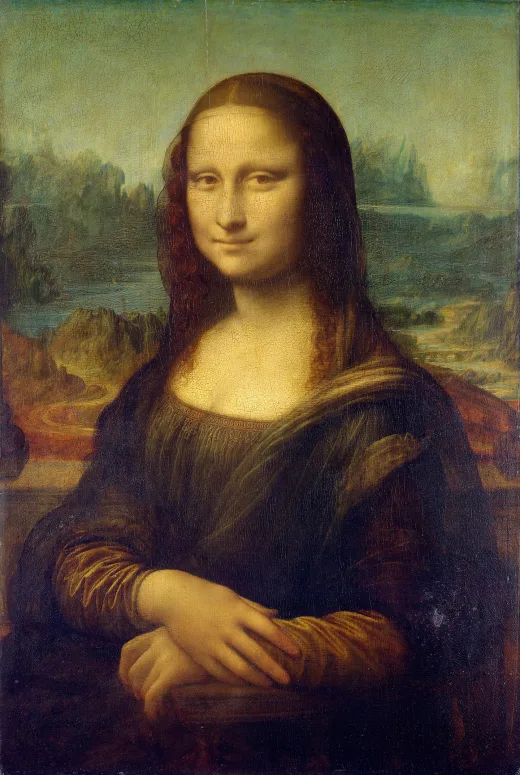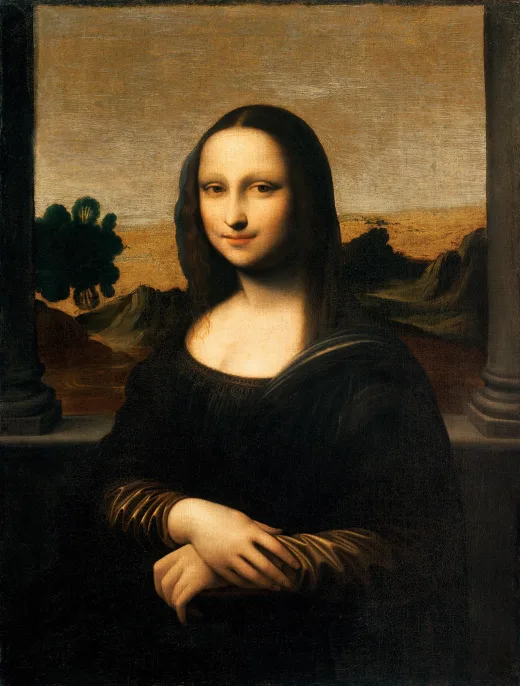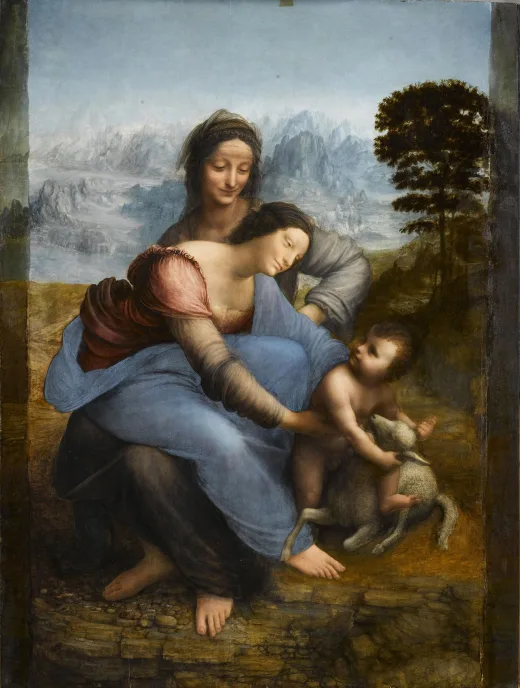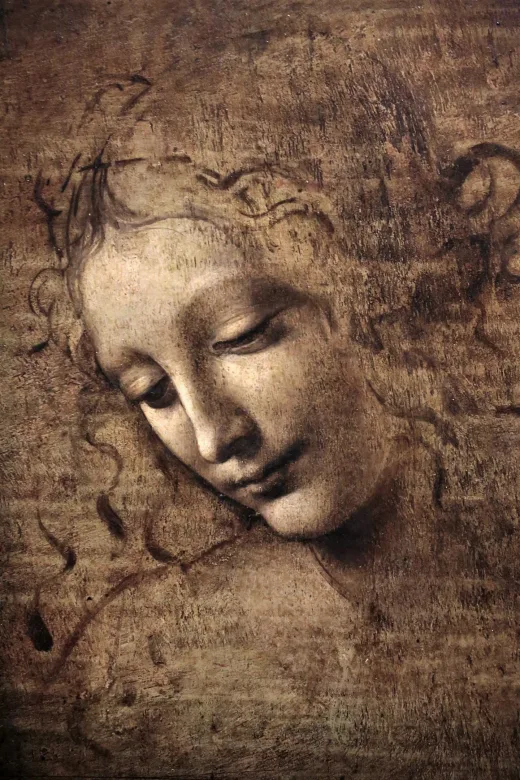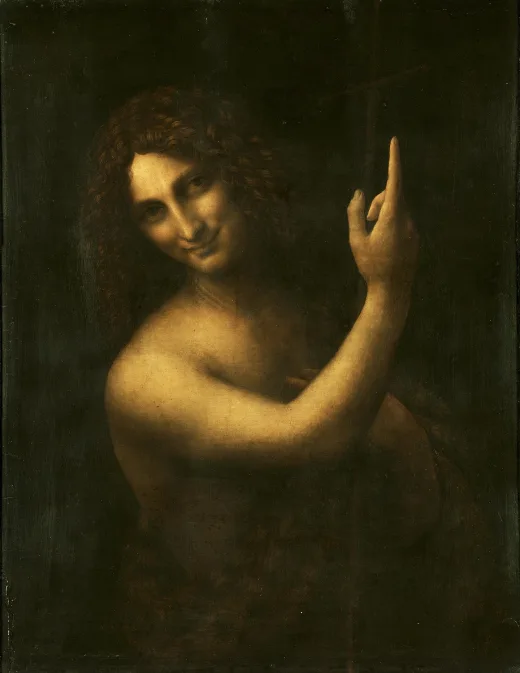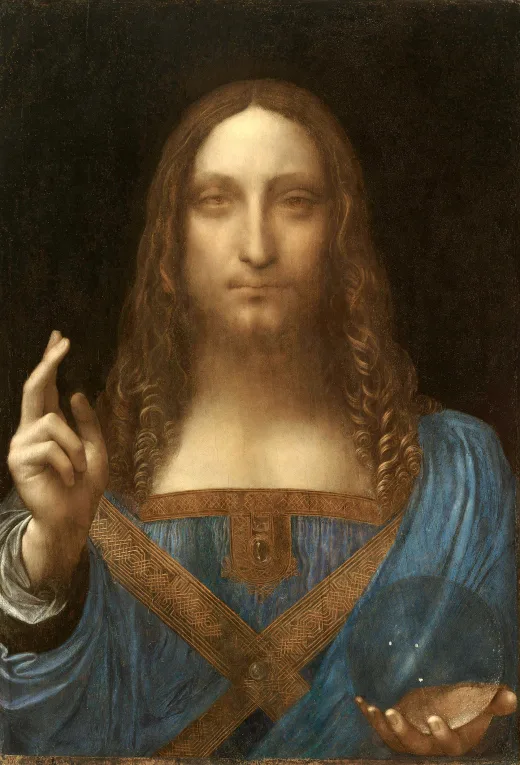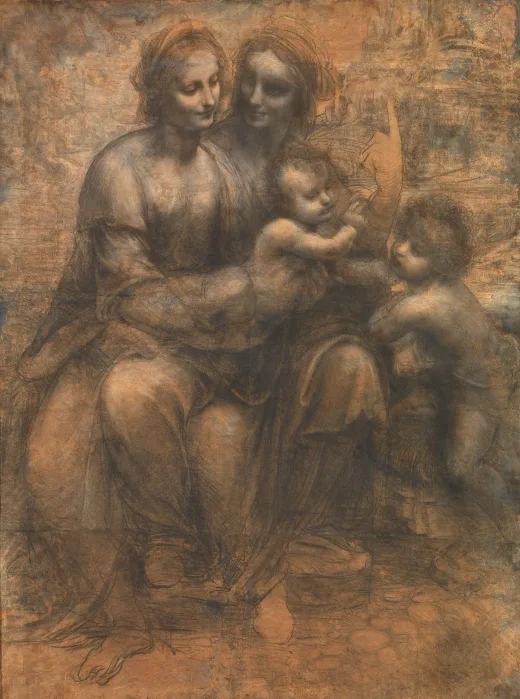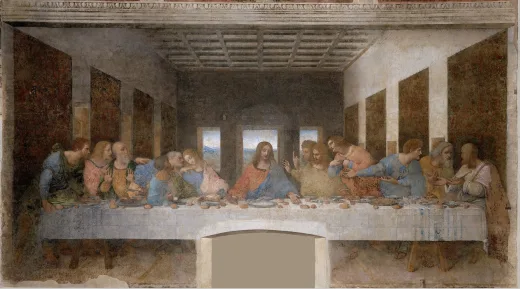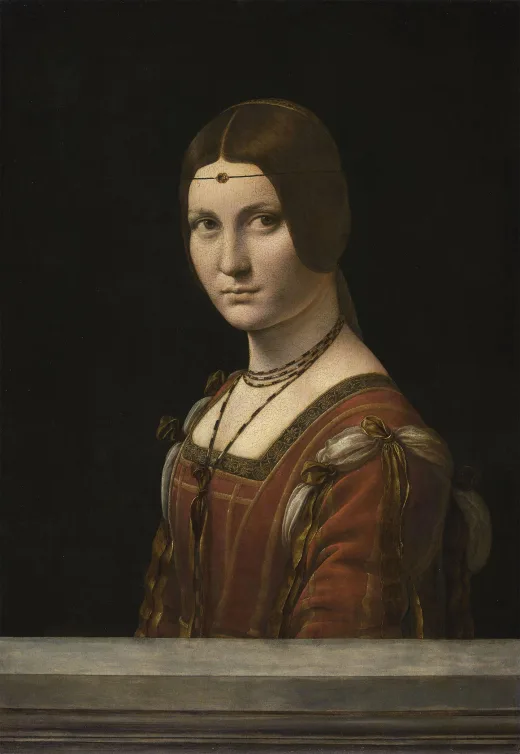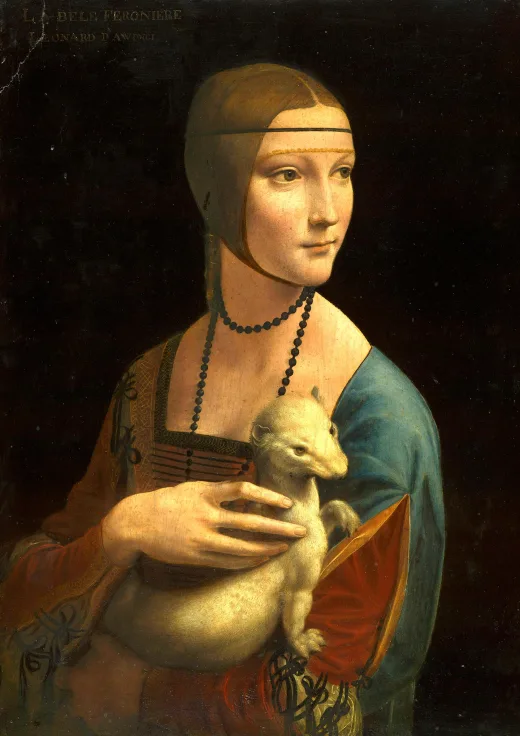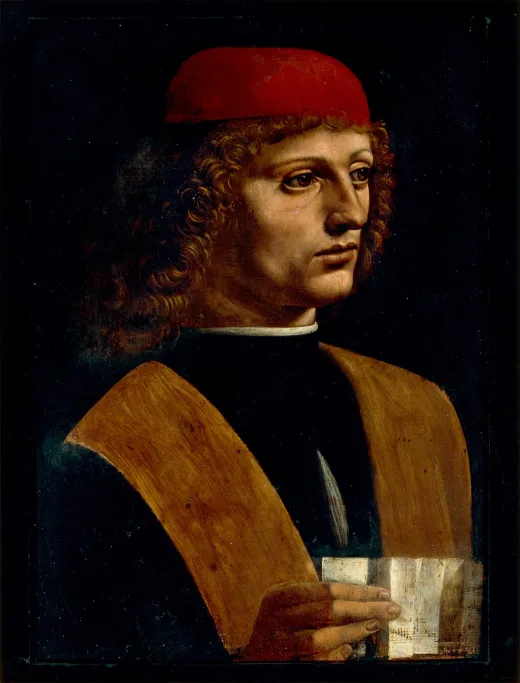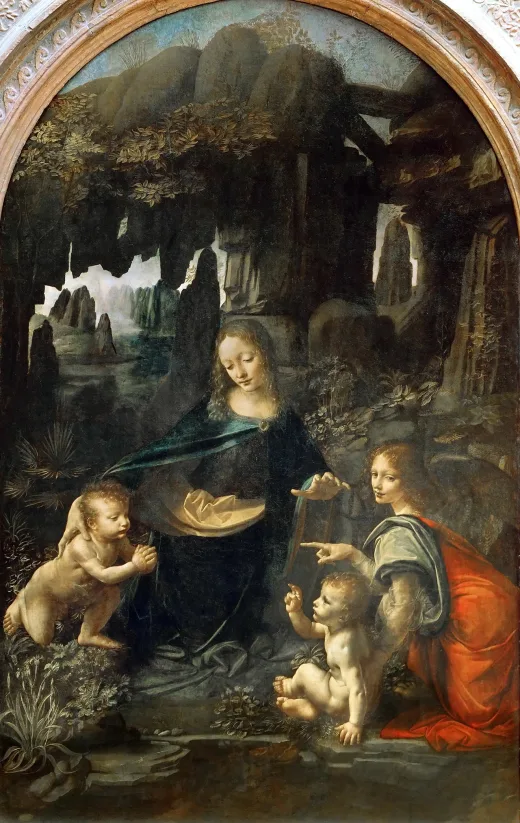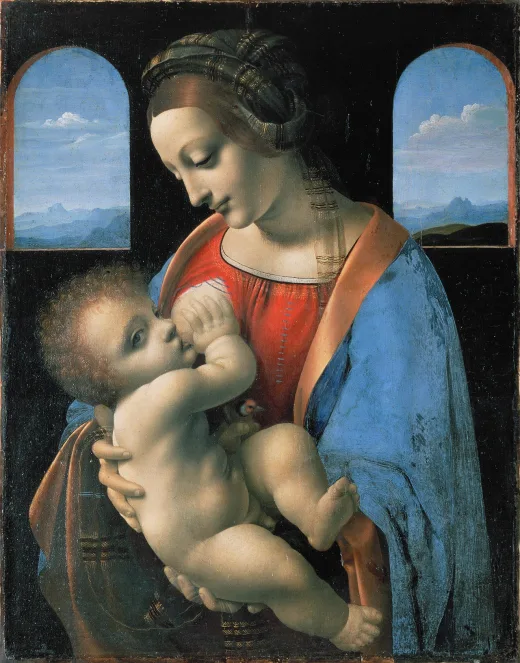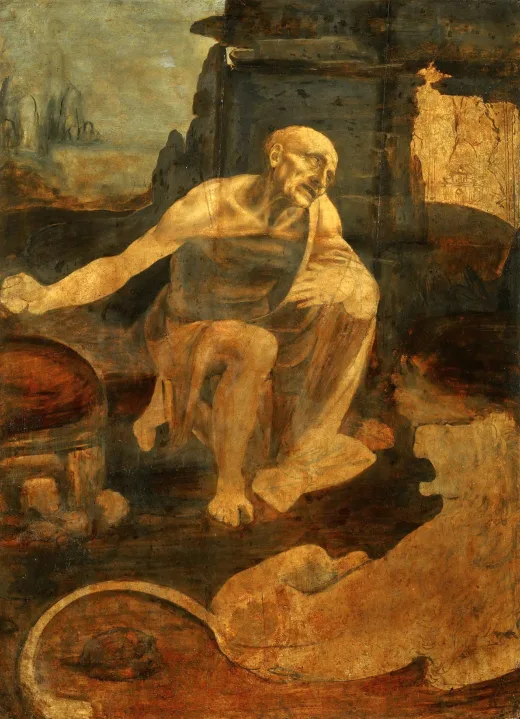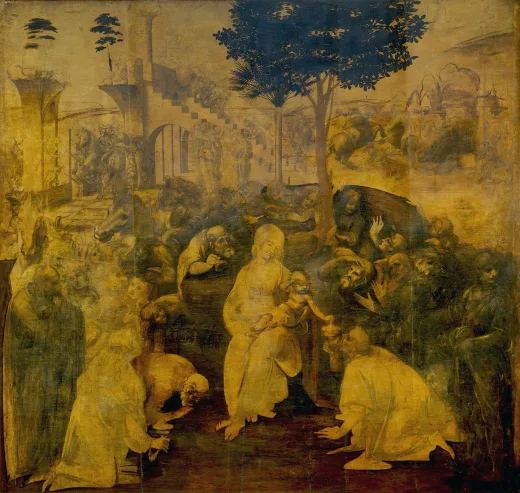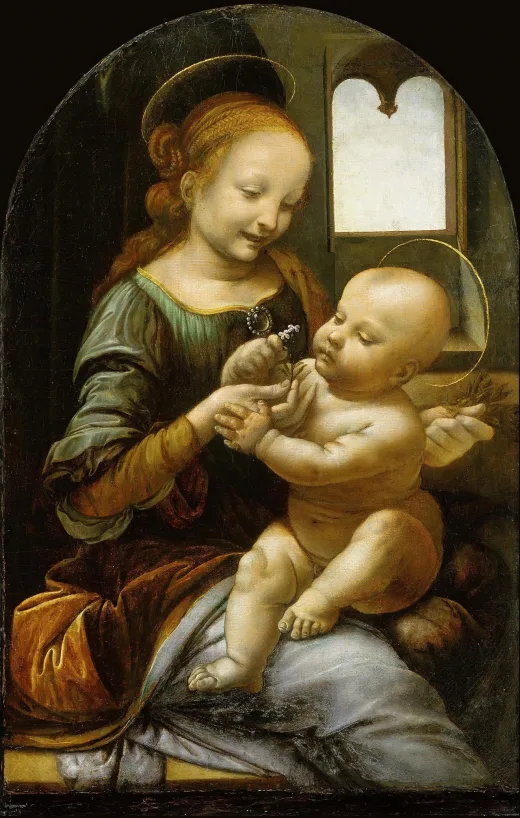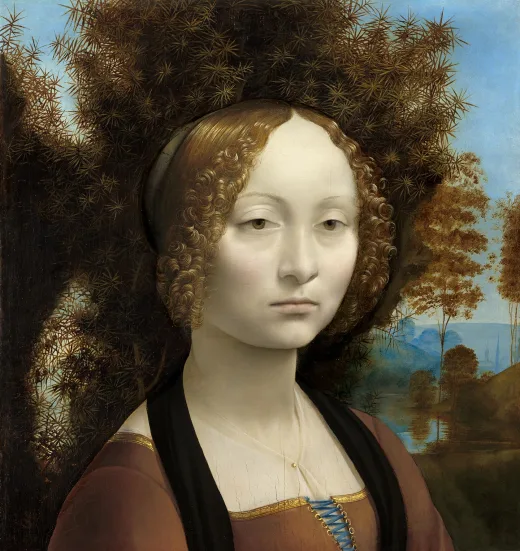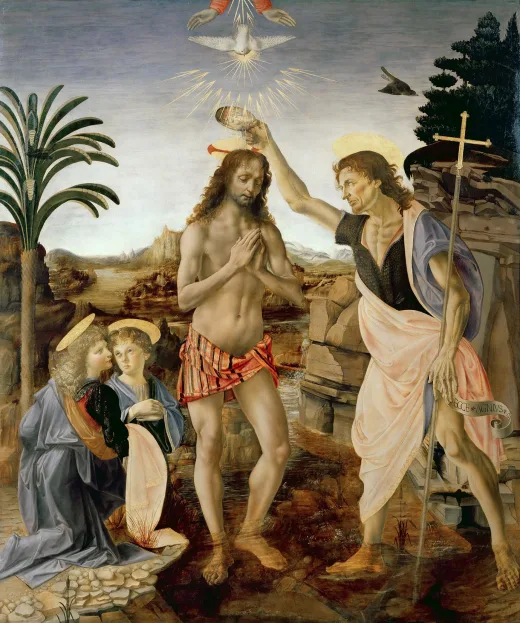达·芬奇《岩间圣母》伦敦版超高清大图
原图尺寸:11011×17224像素(350 DPI)超高清图
下载原图消耗6艺点
文件大小:273.18 MB
下载格式: ZIP ( PNG+JPG )
作品名称:岩间圣母(伦敦版)
Virgin of the Rocks (London version)
作品作者:列奥纳多·达·芬奇(Leonardo da Vinci)
创作时间:1495–1508年
作品风格:文艺复兴盛期
原作尺寸:189.5 × 120 厘米
作品材质:木板油画
收藏位置:伦敦国家美术馆
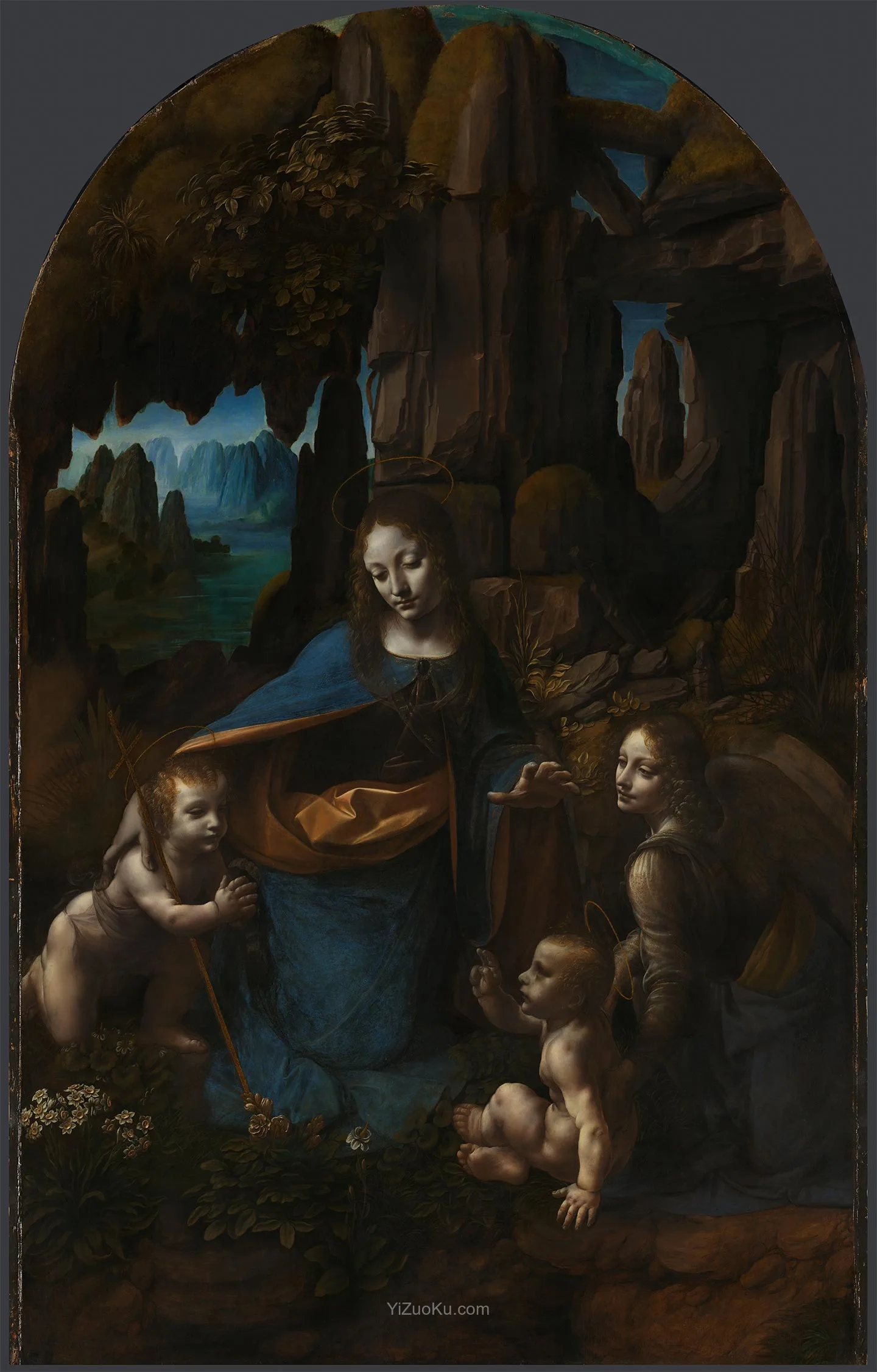
作品简介
岩间圣母是指列奥纳多·达·芬奇的两幅画板油画的统称,这两幅画构图基本相同,一幅画作于1483年至1486年,现藏于卢浮宫,一幅画于1491年至1508年,现藏英国国家美术馆。
伦敦国家美术馆藏《岩间圣母》大概1508年之前完成。有助手帮忙画了一些部分,助手可能是de Predis兄弟。这幅画原来是为圣母无原罪兄弟会的礼拜堂-米兰圣芳济大教堂而作,约在1781年至1785年画作被教堂卖给盖文·汉米顿(Gavin Hamilton),他带到英国。之后经过多次辗转收藏买卖,最后在1880年伦敦国家美术画廊买下它。
在2005年6月,用红外线进行分析发现有别的画作被覆盖在下,图案是一个跪着的女子一手抱着婴儿,另一手展开,部分研究者认为可能作者原来要画的主题是朝拜初生的耶稣。其实现代有许多图稿用X光或红外线检查时被发现出来。
Leonardo’s mysterious painting shows the Virgin Mary with Saint John the Baptist, Christ’s cousin, and an angel. All kneel to adore the infant Christ, who in turn raises his hand to bless them. They are crowded in a grotto overhung with rocks and dense with vegetation.
The painting was part of a large, elaborate altarpiece made for the church of San Francesco Grande, Milan to celebrate the Immaculate Conception of the Virgin Mary. It replaced a similar picture Leonardo made earlier (now in the Louvre, Paris).
Leonardo has used innovative painting techniques to give the impression that the figures are emerging from the darkness of this shaded setting. For example, he has blurred the edges of their forms to indicate the shadows that envelop them. The underdrawing (preliminary outlining of a composition) shows that he attempted a different design but later changed his mind so it is almost identical to the Louvre version.
达·芬奇这幅充满神秘气息的画作呈现了圣母玛利亚、圣婴基督、表兄施洗约翰与一位天使。众人跪拜祈祷,而圣婴抬手赐福——他们簇拥在垂悬着嶙峋怪石、遍布茂密植被的岩洞中。
此画原为米兰圣方济各大教堂《圣母无染原罪》祭坛画的组成部分,用以取代艺术家早前创作的同类作品(现藏巴黎卢浮宫)。达·芬奇运用突破性技法使人物仿佛从幽暗岩穴中渐次显现:通过模糊形体边缘来表现阴影的包裹感,并借助蓝灰调薄涂层营造空气透视效果。红外检测显示底层素描与卢浮宫版本几乎一致,表明艺术家虽尝试过不同构图,但最终回归了原始设计。
This is one ofLeonardo’s most mysterious and complex pictures. It’s a rare survival of one of his large-scale painted works, and a key example of many of the techniques and innovations with which he transformed Italian painting. Leonardo began his painting career in Florence, but in the early 1480s he offered his services to Milan’s ruling family, the Sforzas. While in Milan, he received the commission to paint‘The Virgin of the Rocks’.
The painting was to be part of agrand altarpiecewhich included a large sculpture of theVirgin Mary, probably placed above it. The chapel that the altarpiece was destined for was in the church of San Francesco Grande, aFranciscanconvent in Milan. The chapel belonged to the newly-formed confraternity of theImmaculate Conceptionof the Virgin Mary and it was dedicated to this feast.
The notion of the Immaculate Conception, which emerged in the twelfth century, was highly controversial but championed by the Franciscans. The idea was important because in order for Christ to be born without original sin (which passed fromAdam and Evefor disobeying God), his mother, Mary, also had to be free of sin. The doctrine’s supporters argued that the Virgin had been conceived by God even before the creation of the world – and so before original sin.
Leonardo’s painting was commissioned shortly after the pope officially sanctioned celebration of the feast in 1477. The subject was still so new that there was no standard way of showing it, giving Leonardo free rein to create a new composition. He painted the Virgin, an infantSaint John the Baptist– a gilded cross under his arm – and an angel, kneeling around Christ, a chubby cross-legged child. The three figures communicate with each other in silence while the angel acts as a heavenly witness to the scene. They are embedded in the landscape: foliage tickles Saint John’s knees and Christ’s toes, and rocks hem them in on all sides.
Writers who supported the Immaculate Conception defended their argument using biblical passages that expressed the pre-existence of divine Wisdom (later associated with the Virgin). One of these was a verse in which Wisdom says: ‘From the beginning and before the world, was I created, and unto the world to come I shall not cease to be’ (Ecclesiasticus 24:14). This might explain why Leonardo has placed the figures in a shady grotto, with views through the rocks to a watery landscape beyond. These primitive elements suggest the scene is set in the earliest moments of creation: the first verses of the biblical creation story tell of God creating the earth out of the watery deep. The rocks are shaped like rounded cones – they look as though they have just emerged from the depths of the earth, like volcanic eruptions. Their upward energy contrasts with the water’s stillness, the green of which suggests it is shallow, like a swamp. A haze over the water suggests its warmth – a fetid pool, ripe with the promise of life. The place is certainly fertile: the plants around Saint John the Baptist’s knees are firm and luscious, the leaves plump. Plants even sprout from the rocks above; the landscape is alive.
In this picture we see examples of many of Leonardo’s broad range of interests. His surviving drawings include numerous studies of nature: dramatic rock formations, trees and detailed plant studies. He was fascinated by the power of the natural world; he made nine drawings of an imaginary deluge, expressing the force of water. He paints the rocks of the holy grotto with immense attention to the detail of their texture; we can almost feel it ourselves under the infant Christ’s left hand. But the flowers don’t resemble any real flowers – they‘re hybrids of different plants.
Leonardo has used his inventive technique, now called aerial perspective, to give the impression of a vast landscape setting. He realised that we perceive the same colours differently depending on their distance from us; green appears blue if viewed from far off. By painting the mountains in the background blue, he tricks us into believing they are in the far distance. He softened their edges so they appear hazy, another technique that mimics the effects of vision in reality. The cool blue-green also contrasts directly with the rich, warm red-brown of the earth.
The figures emerge softly from the darkness of the grotto. Leonardo created this effect by painting very subtle, rather than stark, transitions between light and dark. This created a blurry effect around the edges of forms – look at the Virgin’s temples and nose for example – a technique later calledsfumato. As with ’aerial perspective', this idea was a result of his experiments into vision and perception in this period. Leonardo built up his figures using layers of black and white underpainting, showing his knowledge of the way we perceive shapes through the effect of light and shadow on their surfaces.
Recent conservation work has revealed that Leonardo painted this, his second version of the picture, in three phases. He probably started in the early 1490s, painting the angel’s delicate gauze sleeve. Technical examination shows that a few years later he changed the position of Christ’s head, turning it from a three-quarter to profile view. In 1499 he left Milan for Florence to escape the turbulence caused by the French invasion of the city. He was summoned to return to finish the picture in 1506, when he added a layer of ultramarine (an expensive bluepigment) to the sky – as specifically mentioned in the original contract.
Our panel, begun about a decade after the first version, has been painted in a significantly different style. Some areas appear to be unfinished if viewed up close, but this was probably deliberate: it enables us to focus on the most important features. There are fewer colours too – it is mainly blue, yellow and brown. Leonardo has changed the angel’s robes from red to blue, probably to simplify the picture and focus attention on the Virgin’s yellow draperies.
这幅《岩间圣母》是达·芬奇最神秘复杂的杰作之一,作为其罕见存世的大型油画,集中展现了革新意大利绘画的诸多技法。1480年代初,达·芬奇从佛罗伦萨转赴米兰为斯福扎家族服务期间,受命创作此画。
作品原属米兰圣方济各大教堂《圣母无染原罪》祭坛组画,安置于圣母雕塑下方。该祭坛所属礼拜堂由新成立的"圣母无染原罪兄弟会"供奉,其教义主张圣母自创世前即蒙神恩免除原罪——这一12世纪由方济各会倡导的争议学说,在1477年教皇批准庆日后成为达·芬奇的全新创作命题。
画中人物被置于象征创世之初的原始岩洞:锥形岩体如火山新生,沼泽般的水域蒸腾着生命气息,植被在岩缝间勃发。这种环境暗合《德训篇》"自太初、在万世之前就已受造"的经文,巧妙图解了"圣母预存论"。达·芬奇运用多项开创性技法:
空气透视法:背景青山渐隐于蓝雾,模拟人眼远观效果
晕涂技法:圣母鼻梁与太阳穴的明暗渐变如薄雾笼罩
地质写实:基督左掌下的岩体质感堪比标本
植物杂交:虚构花卉融合多种植物特征
科学检测揭示创作分三阶段:
1490年代初:绘制天使薄纱袖
中期调整:圣婴头部由四分之三转向侧影
1506年返工:按契约要求添加群青天空
相较于卢浮宫版本,本作采用更简练的蓝黄棕配色体系:天使红袍改蓝袍,突出圣母明黄衣饰。部分区域的"未完成感"实为引导视线的精心设计,彰显达·芬奇"艺术应如雾中看花"的美学理念。
局部细节
